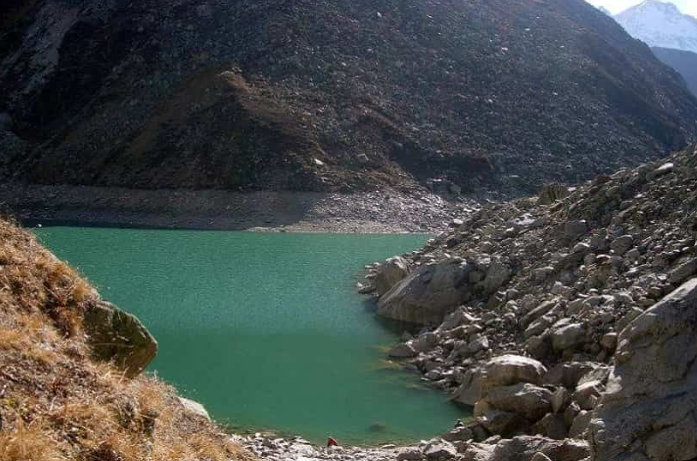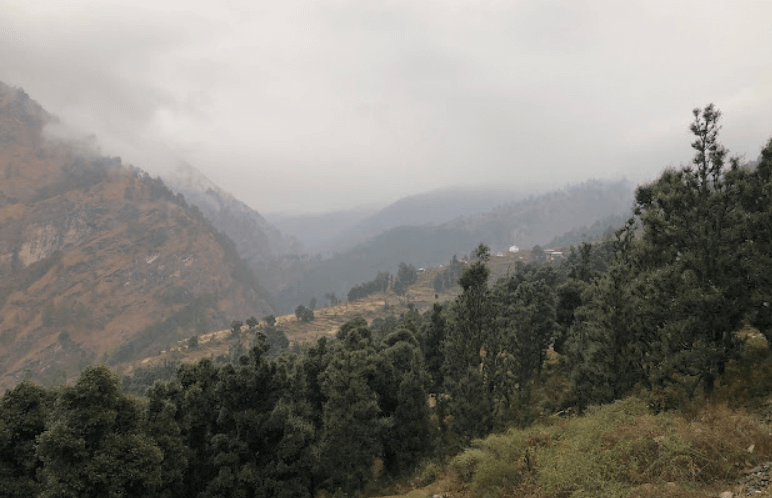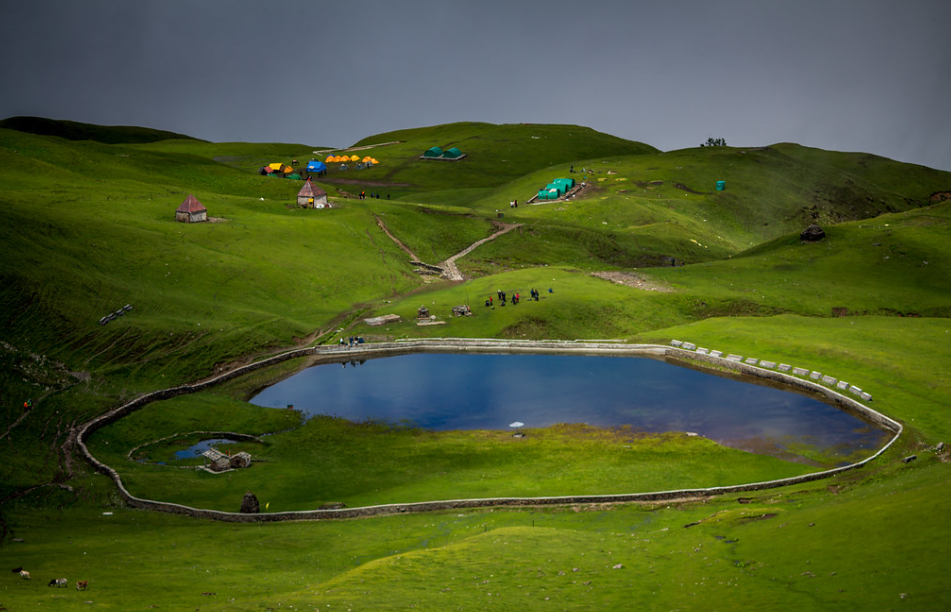Homkund Lake, also known as “Mystery Lake,” is a high-altitude lake located in the Garhwal Himalayas of Uttarakhand, India. It is situated at an elevation of around 5,029 meters (16,499 feet) above sea level. The lake holds significant religious and mythological importance, particularly in Hinduism.

Homkund Lake In Chamoli
Homkund Lake, nestled in the Chamoli district of Uttarakhand, is a serene high-altitude lake perched at an impressive elevation of 15,200 feet above sea level. It finds its home on the right base of the formidable Nanda Ghunti Peak. This pristine body of water is a sight to behold, especially with its picturesque backdrop of majestic snow-clad peaks, including the imposing Trishul and Nanda Ghunti.
The lake’s tranquil ambiance and breathtaking surroundings make it a haven for nature lovers and adventurers alike. Its remote location adds to its allure, offering visitors a chance to immerse themselves in the untouched beauty of the Himalayas.
Mythology About Homkund Lake
Homkund Lake holds a significant place in Hindu mythology and is situated in the Himalayan region of Uttarakhand, India. According to legend, it is believed to be the place where Lord Shiva, the Hindu deity, resided for a while during his earthly sojourn. Here’s a brief overview of the mythology surrounding Homkund Lake:
Lord Shiva’s Meditation: According to the mythological accounts, Lord Shiva chose Homkund as a place for meditation and penance. It is said that he performed rigorous meditation here to attain spiritual enlightenment.
The Battle with Demon: Legends also mention a fierce battle between Lord Shiva and a powerful demon named Apasmara. This demon represented ignorance and darkness. Lord Shiva fought Apasmara in Homkund to rid the world of evil forces. During this intense battle, it is said that Lord Shiva created the Homkund Lake with his trident (trishul) to quench his thirst. The lake is believed to have been formed by the water that flowed from the impact of Shiva’s trident hitting the ground.
Pilgrimage Site: Homkund is considered a sacred site by Hindus and attracts pilgrims who embark on arduous journeys to reach the lake, especially during the annual Nanda Devi Raj Jat Yatra, a significant pilgrimage in the region.
Natural Beauty: Apart from its religious significance, Homkund is also renowned for its breathtaking natural beauty, surrounded by snow-capped peaks and pristine alpine meadows.
Cultural Importance: Homkund Lake is not just a site of religious significance but also holds cultural importance in the region. Folklore, rituals, and local traditions associated with the lake enrich the cultural fabric of the Himalayan communities.
While the mythological accounts of Homkund Lake add to its allure, the natural beauty and spiritual aura of the place continue to fascinate pilgrims, trekkers, and nature enthusiasts alike.
Near Place to Visit
How To Reach Sankri
Sankri is a picturesque village located in the Uttarkashi district of the Indian state of Uttarakhand. It serves as a…
Bedni Kund
Bedni Kund is a high-altitude lake located in the Chamoli district of Uttarakhand, India. It is situated at an elevation…
How To Reach Harshil
By Road
You can reach Gopeshwar by road from various cities in Uttarakhand such as Rishikesh, Haridwar, Dehradun, and others.
From Gopeshwar, you will need to start the trek to Homkund Lake. The trek is challenging and requires good physical fitness as well as proper planning and preparation.
By Train
The nearest major railway station is Rishikesh Railway Station.
From Rishikesh, you can hire a taxi or take a bus to reach Gopeshwar, which is the nearest town to Homkund Lake.From Gopeshwar, you will need to trek to reach Homkund Lake. The trekking route starts from Gopeshwar and passes through picturesque landscapes and remote villages.
By Air
The nearest airport to Homkund Lake is the Jolly Grant Airport in Dehradun, Uttarakhand.From Dehradun, you can take a flight to reach the airport.After reaching the airport, you will need to continue your journey by road or trekking, as there are no direct flights to Homkund Lake.
Trekking Route
The trek to Homkund Lake usually takes around 5-7 days, depending on your pace and the weather conditions.
The trekking route passes through dense forests, meadows, and high altitude terrain. It is advisable to hire a local guide who is familiar with the route.


